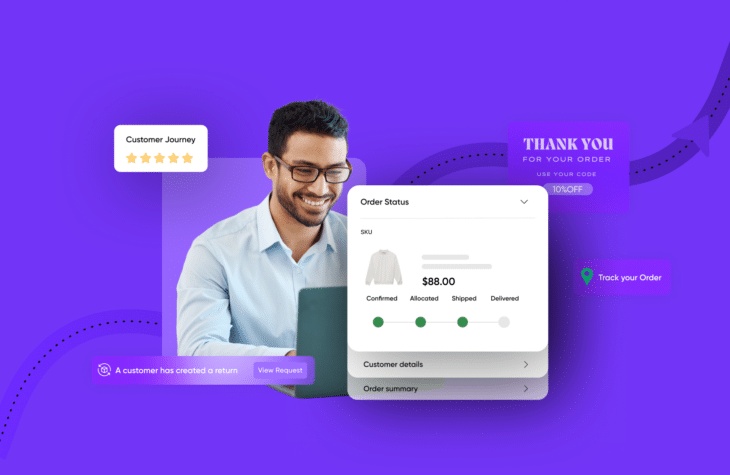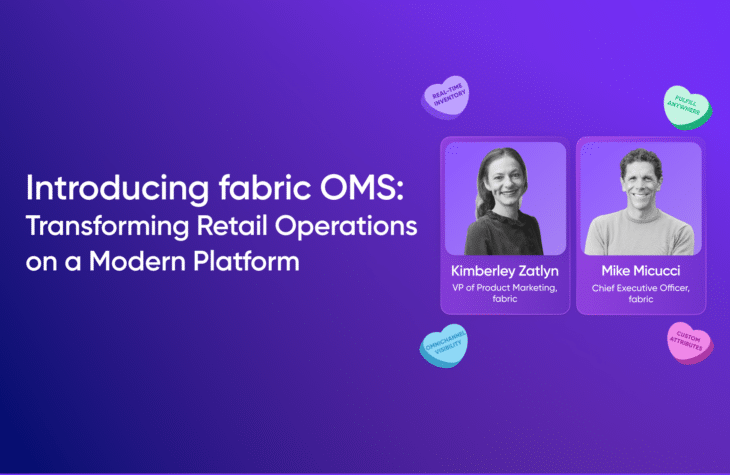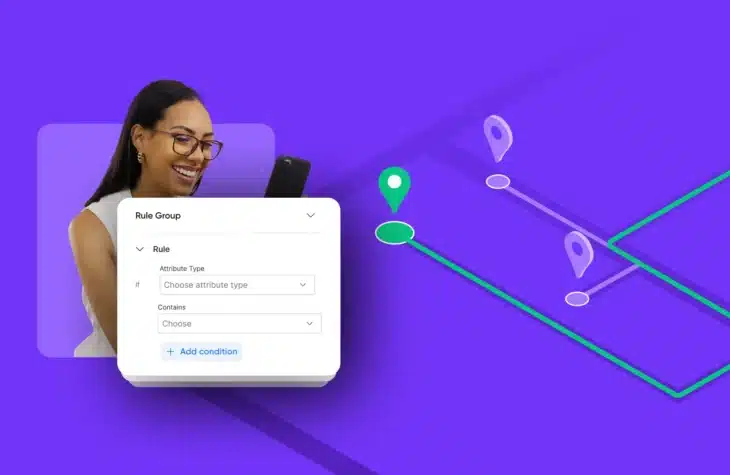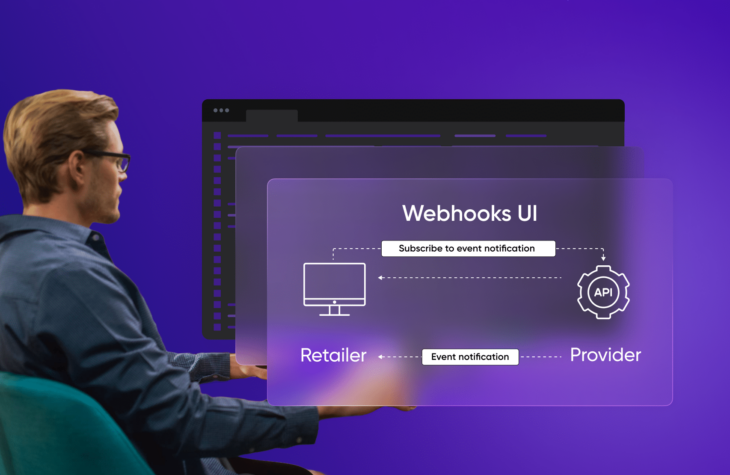Customer Loyalty Programs Guide: Building Loyalty in 2023
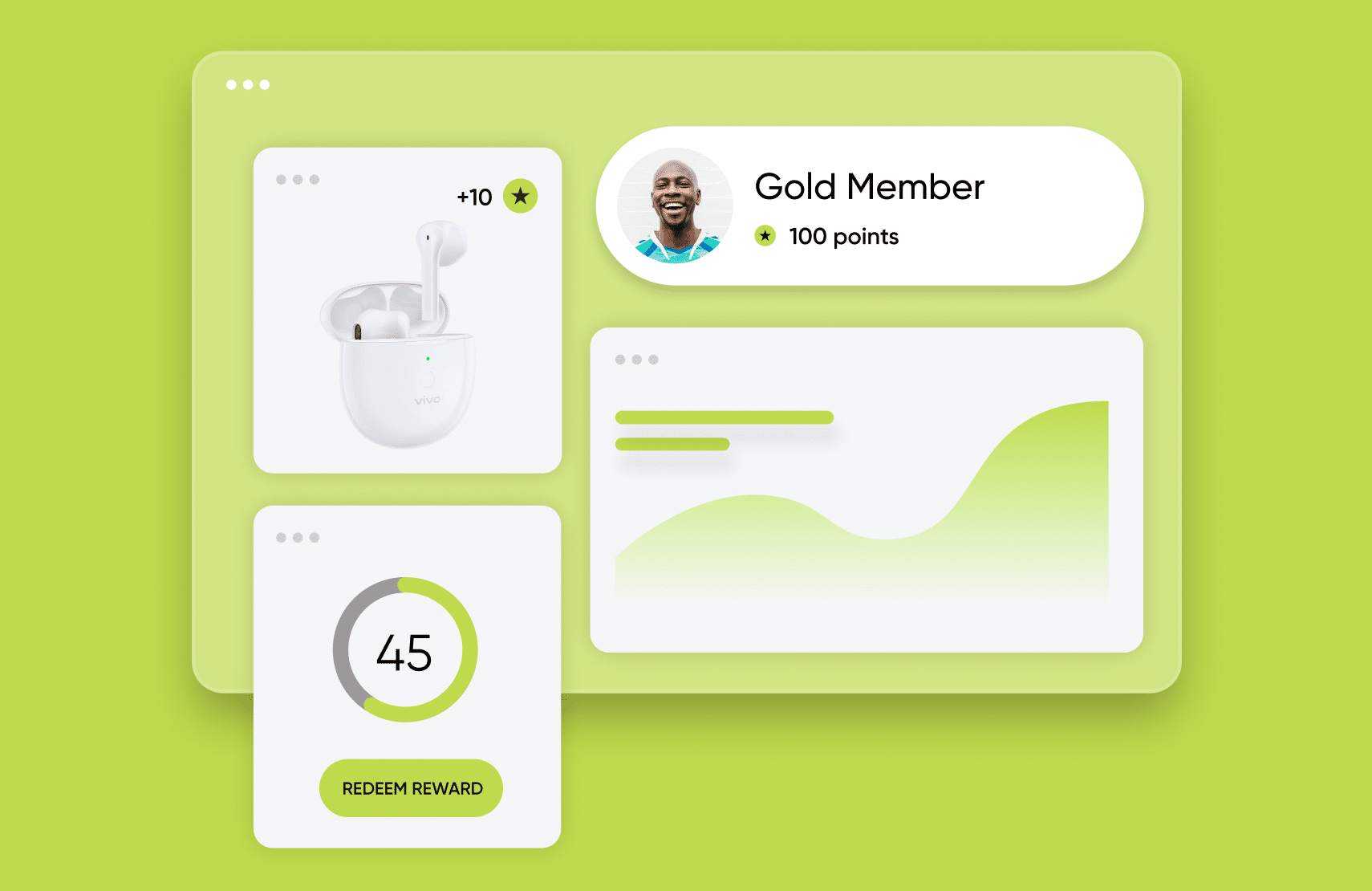
Customer loyalty is essential to maximizing e-commerce revenue. When customers are loyal to your brand, they’ll return to your business repeatedly rather than explore your competitors.
It is easier to get someone to buy from you again than to find a new customer. You’ve likely heard the saying, “your best customers are your existing customers.”
Customer loyalty programs are common for retaining loyal customers. According to Accenture, over 90% of companies have a loyalty program. By rewarding customers for their loyalty, brands can maximize the lifetime value of each individual.
Research from Harvard Business Review shows that companies with loyalty programs grow their revenues 2.5 times faster than those without loyalty programs. They do so by maximizing the customer lifetime value (CLTV) of each individual instead of trying to attain new customers.
The former is more economical as the average customer acquisition cost (CAC) across e-commerce industries increases. Advancements in distribution channels, e-commerce technologies, and digital advertising platforms have made it easier for brands to get in front of consumers.
The environment is hyper-competitive, where companies must spend more and work harder to attract new buyers. If you’re interested in creating your own program, you must first realize that a one-size-fits-all approach does not work. Instead, each brand must create a unique offering to provide real value.
In this guide, we’ll walk through everything you need to know about customer loyalty programs. We’ll also give a step-by-step process for creating a loyalty program your customers will love.
Customer Loyalty Program Basics
What is a customer loyalty program?
A customer loyalty program is a marketing strategy where companies increase customer loyalty and retention by rewarding those who actively engage with the brand. It traditionally rewarded purchases but has grown to reward other interactions such as social media engagement and contest participation.
Brands can provide program members rewards, like discounts, free products, or benefits from partnerships with other brands. Customers that join the program want to maximize their benefits and are more likely to continue doing business with the brand instead of turning to competitors.
According to Episerver, 21% of consumers are more likely to purchase again from brands that do more to personalize their digital experience than those that do not. They are also 17% more loyal.
How customer loyalty programs work
Loyalty programs begin when a business recognizes the need to boost customer lifetime value and retention. They then construct a program that customers will want to be a part of and start enrolling members.
Here is a step by step process of how this works:
- Merchants define the objectives of the program and plan its implementation.
- They launch and market the program to their target customers.
- Customers sign up for the program.
- Customers get initial benefits.
- If the program is incentive-based, customers perform actions to receive more rewards.
- Customers share the program with their friends and family.
- The brand monitors the effectiveness of the program and makes improvements as required.
Examples of loyalty programs
There are plenty of examples of successful loyalty programs for inspiration. Here is how a few companies are using their loyalty programs to excellent effect.
- North Face: The North Face VIPeak program rewards customers points for each $1 they spend online or in-store. Customers can also earn points for other forms of engagement, such as bringing their own bag to shop or exploring national parks.
- Ulta: The Ultamate Rewards program is a tiered loyalty program where customers can earn greater rewards the more they engage. As customers progress from tier to tier, they earn more points for their purchases and take bigger discounts on products.
- Bed Bath and Beyond: The Beyond+ loyalty program requires members to pay a $29 annual membership fee. In exchange, members get 20% off every order and access exclusive offers, free shipping, and special events.
Benefits of loyalty programs
From increasing sales to bolstering brand reputation, a great customer loyalty program can substantially impact the success of your business. Let’s examine some of the most important benefits of starting a loyalty program.
Increased sales and revenue
Loyalty programs maximize the customer lifetime value of members by incentivizing them to purchase from your brand repeatedly. A great example is Nordstrom, whose members spend four times more than non-members.
Because customers derive additional value from the program, you no longer need to compete with your competitors solely on price. Shopping becomes more experiential than transactional and loyal customers are more likely to stick with you instead of shopping around based on price.
Reduced marketing costs
Retaining customers is less expensive than winning new customers. With a loyalty program that maximizes the value of each customer, your business can cut back on acquisition costs while still reaching its goals.
A great source of data
Loyalty programs are a great way to gather more customer data. Users need to create an account and provide personal information to sign up for the program.
You can track each customer engagement to build a detailed profile for each customer. With a better understanding of your members’ interests, you can personalize the loyalty program to improve your relationship with customers further.
Enhanced customer experience
Loyalty programs improve the customer experience by giving users engaging ways to interact with the brand. Instead of the basic transactional shopping flow, the rewards structure turns shopping into a game. For instance, Shine On has seen a 35% increase in engagement with its rewards program.
Stronger connection with customers
Customers in your loyalty program can feel a strong emotional connection with your brand. The more appreciated they feel, the more likely they are to share your business with their peers.
Word-of-mouth marketing is an effective tool for growing your business as it remains the best way to instill trust in your brand—even more so than reviews. According to Nielson, 92% of shoppers say they trust earned media such as word-of-mouth recommendations more than all other forms of advertising.
Elements of successful programs
Simply throwing together a loyalty program does not ensure results. Instead, you must structure the program to bring real value to both you and your customers. Let’s examine the key elements that are present in a successful customer loyalty program:
The program isn’t too complicated
There are countless benefits you can offer program members. Thus, it can be tempting for merchants to go overboard with what they include in their loyalty program. However, a loyalty program that is all over the place is ineffective.
Your program should have a clear objective and be easy for customers to understand. For example, if customers get points or rewards for performing specific actions, they should know what they’ll earn.
Omnichannel experience
Customer loyalty programs focus on providing an omnichannel experience. Users can become frustrated if they receive a different experience with other channels. Customers should be able to access and redeem their rewards through any channel, whether it is your mobile app or shopping in-store.
The program doesn’t cannibalize your business
While it may seem obvious, your loyalty program should not cut into your existing business. Many companies make the mistake of over-rewarding their best customers. These customers are those who already buy from the business frequently.
Offering these customers more discounts has little benefit as they are likely to purchase from your business anyway. That doesn’t mean you should not reward your most loyal customers, but rather you should do so in a manner that results in more revenue, not less.
For example, consider a customer that buys products from a specific category on a bi-weekly basis. Instead of offering them discounts on products in that category, you can give them discounts for items in a related category they have yet to purchase.
Let people choose their rewards
While the program should be simple, it should not limit what customers can get. Choosing your rewards is one of the most attractive benefits of joining a loyalty program. Plus, not every customer is motivated by the same reward. By giving customers a choice, you increase the chances they find value in the program.
Choosing a Loyalty Program Type
There are many types of customer loyalty programs. Different types of programs are better suited for different industries and brands. Before you create your loyalty program, you must determine which type is the best for your business.
Types of programs
Loyalty programs have the common goal of retaining customers, increasing customer lifetime value, and showing customers appreciation. But each type of program takes a different approach to achieve this goal.
Points program
The points program is probably the most common. With this approach, customers earn points for every dollar they spend on the brand’s products. Certain programs will also award points for actions other than purchases.
Customers redeem their points for different rewards, such as discounts on products or free items. The points program naturally encourages customers to buy more frequently as they can accumulate rewards for each person.
Tiered program
The tiered program segments members into tiers (or levels) that determine what rewards they can receive. Customers can move from one tier to another by actively engaging with the brand. Each time a customer moves into a new tier, the value of their rewards increases.
A tiered program gives customers initial rewards for joining the program while still incentivizing them to make more purchases. It also adds some gamification to the program as members can easily track their progress and unlock new rewards based on their activity.
Customers can gain more long-term value from this program as reaching a new tier offers sustained benefits. With a points program, the customer loses all the value they’ve built up when cashing out their points for a reward.
Paid program
With a paid program, you charge customers a monthly or annual membership fee to join. In exchange, the customer receives ongoing rewards such as free shipping or a set discount rate on all orders. Paid programs also tend to include member-exclusive benefits.
This type of loyalty program works best for frequent buyers as they are more likely to join a loyalty program that requires an upfront payment.
Aligning programs with categories
Different types of loyalty programs will work better in different industries. Let’s take a look at some verticals where loyalty programs are common and see how leading companies structure their programs:
Luxury brands
Customers who shop for luxury products often do so to project a particular lifestyle unique to those around them. You can tap into this desire by creating a loyalty program full of member-only exclusives.
You can do this through a tiered program with a high spend threshold, such as Neiman Marcus’ InCircle. Or a paid program like the Swarovski Crystal Society.
Retailers
Big retailers must motivate customers to shop in various categories repeatedly. The best strategy is to offer a paid membership plan that streamlines the shopping experience and repeatedly benefits customers. The perfect example is Amazon Prime, and the free 2-day shipping members receive.
Cosmetics
As a consumable product with a high purchase frequency, cosmetic brands can benefit from a loyalty program that offers benefits while also encouraging users to make recurring purchases. Tiered programs provide just that. An example of this is e.l.f. and their beauty squad program.
Food and beverage
Quick service restaurants must motivate frequent purchases without overdoing the discounts and freebies. A simple points-based program often works best.
An example of a loyalty program in this niche is the Starbucks Rewards program. Users earn stars for every purchase and can redeem these stars for free items. Starbucks runs events like double-star days to incentivize people to earn more.
Building Customer Loyalty Programs
Step 1: Identify what customers value
The first step to creating a successful customer loyalty program is to identify what benefits and rewards your customers will value the most. Customers can become frustrated when joining a program only to have a brand send them rewards that are not valuable.
If people are not getting anything useful out of the program, it will have little impact on improving loyalty. Thus, you must perform proper research to understand what your customers are interested in, whether it’s specialized content, early access to product drops, or exclusive discounts.
While researching and planning your loyalty program, it is useful to analyze existing programs offered by competitors. Doing so can provide insights into what customers expect and want from a program. It can also help identify ways to provide additional value to make your program more attractive.
For instance, if you are a beauty and skincare retailer, you can look at Ulta’s Ultamate Rewards program and gauge the sentiment of program members. You can do this by looking at reviews of the program and associated credit cards.
Step 2: Select software and services
Next, you must determine what technology you need to execute your program. You’ll also need to evaluate whether third-party management services will allow you to implement the plan with greater efficiency.
LMS software
Loyalty management systems (LMS) provide a backend platform for creating and managing loyalty programs. Brands can define the program’s structure, and customers can manage their membership. With a strong LMS, you can oversee the program in a single place without navigating different systems.
fabric Member allows you to collect and access all your customer data from a centralized dashboard. With headless commerce APIs, you can integrate the LMS with other systems such as your point of sale (POS) system, customer relationship management (CRM) system, or customer data platform (CDP).
Program services
With your technology in place, you must determine how to implement the program. You can launch and manage the program yourself or get a partner like fabric to do that for you.
fabric’s team consists of leading e-commerce professionals who have driven Staples, Amazon, and other industry-leading organizations. With our experience, we can design and deliver an omnichannel loyalty program that will distinguish your brand from the competition.
Step 3: Launch and market program
Once you’ve determined the tools and services needed to manage your program, it’s time to launch and start enrolling the first members. There is no limit to how you can promote your program.
You can use the same marketing tactics to promote your products, whether it’s email newsletters, calls to action on your website, or social media posts. Start by reaching out to your existing customers and offer additional rewards for early subscribers. Below is some tactics to market your customer loyalty program:
Incentivize referrals from members
One of the most effective ways to grow your loyalty program is to leverage your current customers. You can turn repeat buyers into brand advocates by providing additional rewards for referring new members to the program.
With an LMS like fabric Member, you can easily create referral codes that customers can share with their friends. Most trust the recommendations they receive from family and friends and are likely to give your brand serious consideration, having heard about it through their peers.
Employees as promoters
Employees can be another effective promotional channel. You could train them on how the program works and all the rewards customers can earn. Employees can then clearly communicate the program’s value when engaging with customers through various touchpoints, such as a live chat or a support email.
Step 4: Iterate and improve the program
As more customers join your loyalty program, it is essential to monitor your results and make improvements based on what you find. The clearest indicator of a successful loyalty program is improved customer retention. Customers that are loyal to your brand will repeatedly come back to your business to buy.
The easiest way to evaluate your program’s effects is to compare the behavior between those in your program and those who are not. Look to see how often each group returns and how much they spend. If you find little difference between groups, it can be a sign to adjust your program to provide more value.
When evaluating your customer retention, it’s also important to analyze your customer churn rate (the rate at which customers stop shopping with your brand). While there is a natural churn to doing business, an effective loyalty program should lead to a notably low churn rate.
Survey your customers to assess their satisfaction
In addition to looking at metrics, you can also understand how customers feel about your loyalty program by simply asking them. Create a satisfaction survey asking customers to point out the parts of the program they like and the ones they don’t.
At the end of the survey, give customers the ability to leave any suggestions on how to improve the program. You can take these insights to iterate on the program to solve any pain points preventing your customers from getting value from the program.
Conclusion
Customer loyalty programs are an invaluable tool for growing your business. With a strong loyalty program, you strengthen your connection with customers, improving retention and lifetime value in the process.
To create a successful customer loyalty program, you must clearly understand what your customers value and what types of programs work best for your industry. You then need to implement the right e-commerce technology to manage the program efficiently.
With an LMS like fabric Member, you have a centralized place to manage every aspect of your loyalty program. The platform supports various user roles, and you can create multiple accounts for different business groups.
Get in touch to learn more about how fabric’s products and services can help build your brand a loyal following.

Customer marketing @ fabric. Previously @ Staples, BORDERLINX, and Groupon.


